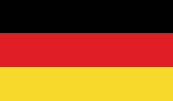Quickly identify the obstacles and drivers within the organization
Marie-Christine Sentis, Transition Manager for the past year.
Marie-Christine Sentis chose this adventure to reconcile her career and life plans, and explains how to identify the obstacles and drivers within the organization.
How long have you been an interim manager?
I became an interim manager in 2011. Prior to that, I spent a large part of my career (25 years) with the Schneider Electric group as a human resources professional. Within the company, I held a large number of positions: HRM (Human Resources Manager) in a plant, management of executives within a division, steering HR projects, HRD Europe for one of the subsidiaries,.... In 2009, following the economic crisis of 2008, the Group implemented a voluntary redundancy plan. As my husband was retiring at the same time, I volunteered for this plan, as we were planning to build a boat and sail for half the year. This is what we did in 2010. In these conditions, the flexibility of the interim management formula seemed perfectly suited to me. At 55, according to the headhunters I met, my seniority and experience would have tended to "scare off" companies likely to recruit me on fixed-term contracts to replace young HRMs on maternity leave, for example.
How did you discover interim management?
I discovered my first assignment on a job board. The ad was from a firm specializing in interim management. The position was an attractive one: HR Director Southern Europe for a major American food group. The incumbent HR Director had left his post for personal reasons, and needed to be replaced. My mission consisted in coordinating the HR policy of 4 plants, each of which was staffed with an HR Director. The assignment lasted 6 months. I was delighted to discover a new professional context and to see that my HR skills were recognized and adapted in another environment. What's more, I enjoyed practicing my job again, managing a team and using English again. It all went very well. Management wanted to extend my contract, but I was planning to set sail again. I had to decline.
Was your second assignment difficult to find?
We were back in April 2012, right in the middle of the French presidential elections, in the middle of the wait-and-see period. So the search was more difficult. In the end, I landed a job with a large family-owned group specializing in electrical distribution, which had expanded rapidly in recent years, notably through a large number of acquisitions. I was in charge of developing human resources at group level, and in particular set up a system for positioning key positions at international level. The assignment lasted 5 months.
What attitude should you adopt for a successful transition assignment?
From the outset, you need to be an active listener, observing your surroundings. It's important to be humble and not to present yourself as a "rocket scientist". It's essential to be clear about the mission's expectations, and to identify the organization's obstacles and drivers. Then, you have to be quick and concrete, because time is of the essence, unlike in a traditional recruitment process, where the candidate is given an average of three months to settle in and find his or her feet. In an interim management assignment, you're also freer and less subject to stress, as there are no long-term career stakes.
How do company employees react to you?
Some see us as just passing through. On the other hand, some don't hesitate to confide in us about the company. In any case, they're interested in our outside view. Unlike a consultant, an interim manager works on a made-to-measure basis. He's not there to sell a stamped method.
If you had to define interim management?
For me, it's a life project. I have to challenge myself with each assignment and adapt to a new environment, which I find exciting.


